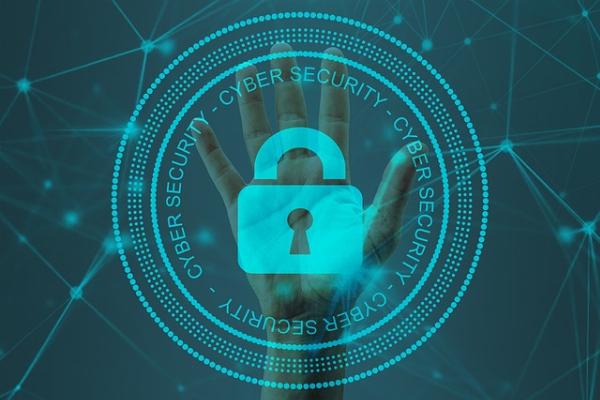The Implications of Blockchain for Cybersecurity

Strong 8k brings an ultra-HD IPTV experience to your living room and your pocket.
There’s a major shift happening in cybersecurity with the rise of blockchain technology. As the digital landscape continues to evolve, the implementation of blockchain is proving to have significant implications for how we approach security measures online. Blockchain’s decentralized and tamper-proof structure is transforming the way we secure sensitive data and defend against cyber threats. In this blog, we’ll explore how blockchain is redefining cybersecurity and changing the future of digital asset protection.
✍️ Curious about the role of blockchain in financial services? Read our guide on blockchain in finance to understand how DeFi, cryptocurrencies, and CBDCs are shaping the future of money.
Key Takeaways:
Immutable Security: Blockchain offers a secure, tamper-proof ledger that makes it extremely difficult for cyber attackers to alter or manipulate data within the network.
Decentralized Trust: Blockchain enhances cybersecurity by eliminating central authority, distributing trust across multiple nodes, and minimizing the risk of a single point of failure.
Smart Contracts: Smart contracts automate security protocols through self-executing code, reducing human involvement, increasing efficiency, and minimizing potential vulnerabilities.
Enhancing Security with Blockchain
Decentralization Minimizing Single Point of Failure Risks
Protecting sensitive data is critical, as breaches can lead to severe consequences for organizations. Blockchain addresses this risk by decentralizing data storage and processing, effectively minimizing single points of failure. Unlike traditional centralized systems—where data stored in one location is more susceptible to cyberattacks—blockchain’s distributed ledger stores information across multiple nodes, making it extremely difficult for attackers to compromise or manipulate all copies at once.
Immutable Ledgers for Enhanced Data Integrity
Maintaining data integrity is crucial for preserving trust and credibility in business transactions. Blockchain addresses this challenge through immutable transaction ledgers, where once data is recorded, it cannot be altered or tampered with. Each block links to the previous one using a unique cryptographic hash, creating a secure chain that prevents unauthorized modifications.
This immutability not only ensures data security but also provides a transparent, auditable record of all transactions. It’s especially valuable in sectors like finance, supply chain, and healthcare, where accuracy and accountability are critical. Blockchain’s transparent and traceable ledger fosters greater trust among all stakeholders.
Blockchain in Identity Verification
Self-Sovereign Identity Models
Blockchain technology is revolutionizing identity verification by enabling self-sovereign identity models. This approach allows individuals to securely manage and control their personal information without relying on intermediaries, giving users full ownership of their digital identity.
Preventing Identity Theft and Fraud
Identity theft and fraud have long plagued the digital world, causing serious financial and reputational harm. Blockchain presents a powerful solution by offering a secure, transparent platform for identity verification. With sensitive data stored on a decentralized ledger, the risk of unauthorized access and manipulation is greatly minimized, making it far more difficult for cybercriminals to exploit personal information.
Additionally, blockchain’s immutable structure ensures that once data is recorded, it cannot be altered or deleted without detection. This tamper-proof feature significantly lowers the risk of identity theft and fraud, providing individuals with greater security and peace of mind.
Challenges and Risks
Scalability and Performance Issues
Scalability and performance remain major hurdles on the road to widespread blockchain adoption. As transaction volumes increase, networks can face slower processing times and higher costs. Addressing these challenges—while maintaining robust security—continues to be a top priority for blockchain developers.
Regulatory and Compliance Considerations
Regulatory and compliance challenges are critical factors in integrating blockchain into existing systems. With varying laws across countries regarding data privacy, financial transactions, and digital assets, navigating the legal landscape is often complex. The key is finding a balance between embracing blockchain’s benefits and adhering to regulatory requirements without stifling innovation.
Risks:
One of the primary risks in blockchain adoption is the uncertainty surrounding future regulations. The lack of clear legal guidelines can create ambiguity and potential compliance conflicts. To mitigate these risks, businesses and individuals must stay informed and remain adaptable as the regulatory landscape continues to evolve.
The Evolving Future of Cybersecurity Through Blockchain
Emerging Trends and Innovations
Blockchain technology is continually evolving to keep pace with the shifting cybersecurity landscape. One emerging trend is the use of zero-knowledge proofs, enabling secure transactions without disclosing sensitive data. Another advancement is the integration of artificial intelligence and machine learning with blockchain, strengthening security measures and improving threat detection.
Integrating Blockchain into the Cybersecurity Ecosystem
On the horizon is the seamless integration of blockchain with other security technologies such as biometrics, IoT security, and encrypted messaging services. By combining blockchain's decentralized and immutable nature with these technologies, organizations can create a robust security framework that safeguards against a wide range of cyber threats.
As blockchain technology matures, the integration with other security technologies will become more prevalent,offering enhanced protection against sophisticated cyber-attacks. Cybersecurity consulting companies are increasingly helping organizations leverage this convergence to build resilient digital infrastructures.This integration will not only provide a more secure environment for data storage and transactions but also streamline security processes and improve overall efficiency.
Final Words
Blockchain holds significant promise for strengthening cybersecurity. Its decentralized, transparent, and tamper-proof architecture can transform the way we protect sensitive data in the digital age. As more organizations adopt blockchain to combat cyber threats, it’s essential to stay proactive in addressing emerging challenges and vulnerabilities. Continued collaboration, education, and research will be key to unlocking blockchain’s full potential in securing our digital future and safeguarding information in an increasingly connected world.
FAQ
Q: What impact does blockchain have on cybersecurity?
A: Blockchain significantly impacts cybersecurity by offering a decentralized and immutable system. Its tamper-resistant design helps protect sensitive data and transactions from unauthorized modifications or cyberattacks.
Q: How does blockchain improve cybersecurity?
A: Blockchain enhances cybersecurity by providing a transparent, tamper-proof ledger that removes the need for intermediaries. This reduces the risk of data breaches and unauthorized access. Its consensus mechanisms ensure that all data is verified and securely distributed across the network.
Q: What cybersecurity challenges come with blockchain technology?
A: Despite its security advantages, blockchain also introduces new challenges. These include scalability limitations, the risk of 51% attacks on certain blockchain networks, and evolving regulatory complexities. Organizations must address these issues to fully realize blockchain’s potential in cybersecurity.
Note: IndiBlogHub features both user-submitted and editorial content. We do not verify third-party contributions. Read our Disclaimer and Privacy Policyfor details.







